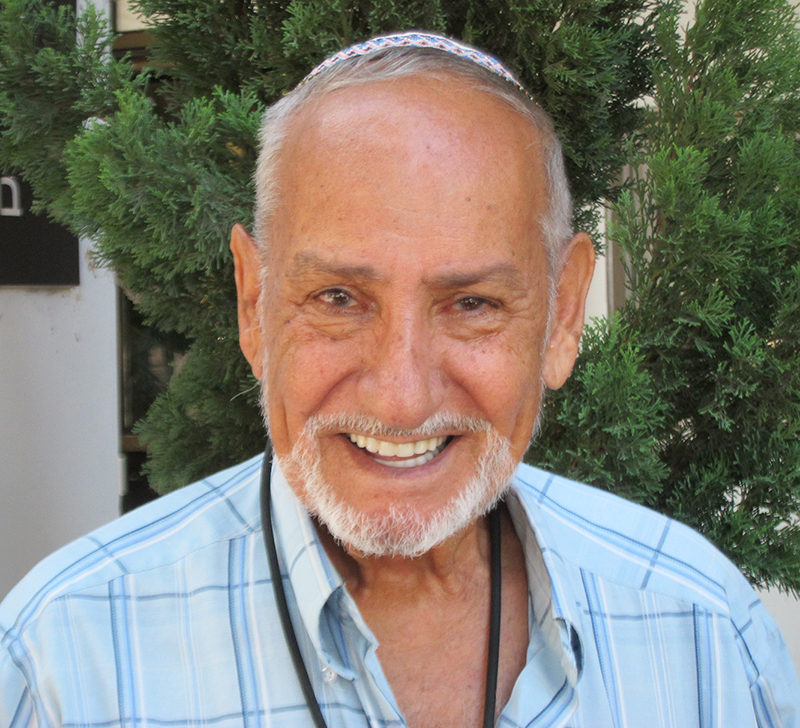- Home
- Participants
- Moshiko Itzchak Ha’Levi
Ha'Levi Moshiko Itzchak
- Choreographer, composer, poet
-
585
Moshe Yitzhak-Halevi, known to the dancing world as Moshiko Halevi, was born in 1932 in the Manshiyah area near Kerem HaTeimanin, Tel Aviv, to Yemeni parents. At the age of 17, he became acquainted with the world of dance through the Mia Arbatova Ballet School. After three months of training, Moshiko was asked to join Mia Arbatova’s ballet troupe, in which he successfully performed as a character dancer. The audience noticed his remarkable talent, despite his small roles, and that was after three months of dancing.
Moshiko devoted his first years as a dancer to the techniques of classical ballet, which formed the basis for all the other dance styles in which he engaged, such as: modern ballet, jazz, tap, and various character dances.
He did his military service as part of a military dance troupe. Upon his release from the army, Moshiko joined the Li La Lu and Do Re Mi Theaters, were he performed as a dancer in musicals. He was also invited to dance in the troupe of the choreographer Naomi Alskovsky for a short period, were he replaced the retired Jonathan Carmon.
In 1953, Moshiko joined the Inbal troupe on the recommendation of the renowned choreographer Jerome Robbins. Robbins was in Israel and taught a special dance course in classical ballet for selected dancers, in which Moshiko Halevi participated. In the Inbal Troupe, Moshiko served as one of its main dancers. In 1957 he traveled with the Troupe on a tour that lasted almost nine months, throughout Europe and the United States.
In 1959, during his time in Inbal Troupe, Moshiko created his first dance, Debka Uriyah, which won a silver medal in a competition, at a dance festival held in Vienna, Austria. This dance has become one of the most sought-after dances in Israeli folk dance classes, as well as a challenge for any dance troupe.
In 1962, when he returned, after Inbal’s second tour of the United States, Moshiko left Inbal and together with dancer Yona Levy and musician Yitzhak Eliezerov formed his troupe, the Paamonim Troupe, which was a great success in Israel and abroad. As an artistic director and choreographer, Moshiko focused his choreographic works on the folkloristic ethnic aspects of the communities in Israel, and the artistic adaptation to the needs of the stage.
While working with the Paamonim Troupe, Moshiko was invited by the Arab Department in the Histadrut to serve as artistic director and guide for minority troupes: Circassians from the village of Kama, Druze from the village of Isfahan and Arabs from the village of Tira. Later Moshiko served as artistic director in the village of Taibe on behalf of the Amal network. In this capacity, for about five years, Moshiko founded the local dance troupes, guided them, and built for them a repertoire for performances. The highlight of these work was the participation of the Isfahan and Kfar Kama troupes at a dance festival in the Netherlands and Belgium, with whom he won awards and acknowledgment.
In 1969, Moshiko was invited to the Wingate Institute to form a representative dance troupe together with the teacher Nina Orad, as a choreographer and artistic director. Later he went on tour with the troupe around Germany.
In 1971, after 10 years of working as a freelancer, Moshiko was asked to return to the Inbal Theater – this time as the Troupe director. During his service as the troupe director, Moshiko was asked by Sara Levi-Tanai to prepare two choreographies, one – an original Yemenite dance for men, and the other – a Chabani Yemenite dance, for a program consisting of short sections called Miniatures. Both dances were a great success in the theater’s chamber program for 12 years.
In 1973, on the second day of the Yom Kippur War, Moshiko went out again with the theater for a tour of America, which lasted about two months. At the end of the tour, Moshiko ended his commitments with the theater and returned to work as a freelancer, this time in the United States, Europe, the Far East and Israel.
During his stay in America, Moshiko was invited twice, alternately, by two modern dance troupes in Canada – one in Ottawa and the other in Montreal. For the band in Ottawa, Moshiko prepared a modern choreography called “Allegory” that combines modern techniques and ethnic elements lasting about 10 minutes. For the band from Montreal, Moshiko prepared a choreography called “Opus Jazz” that embodies dance styles from the fifties to the eighties.
In 2008, Moshiko decided to open his own dance session at Beit Dani, together with Haim Tzemach. In 2009, Haim Tzemach was replaced by Sharon Elkaslasi and Sagi Ezran. In this session Moshiko’s dances are learned and practiced, as well as other choreographers’ dances.
From 1949 until today, Moshiko Halevi has 59 years of activity in the field of dance, of which 48 years are years of extensive creativity in Israeli folk dances. Moshiko created 200 Israeli folk dances as well as composing over 130 melodies to accompany his dances. He produced eight CDs, wrote the “Blue-White” notebook for the Choreographer going to teach abroad and wrote his own biography – “נולד לרקוד”.
His dances have an outstanding special style. He draws his ideas from the ethnic sources found in Israel and in the Mediterranean basin, processes them and adapts them to the needs of contemporary Israeli dance.
There is no doubt that his extensive activity in this field has greatly contributed to the design and style of Israeli dance in Israel and around the world.
His dances are danced and sought after all over the world, where he is invited to deliver workshops and seminars in dance camps to a dancing public from all over the world.
| No. | VIP | Article Name | Subtitle | Categories | Magazine No. | Year |
|---|---|---|---|---|---|---|

836 |
Thoughts in memory of a friend |
|
2022 |







